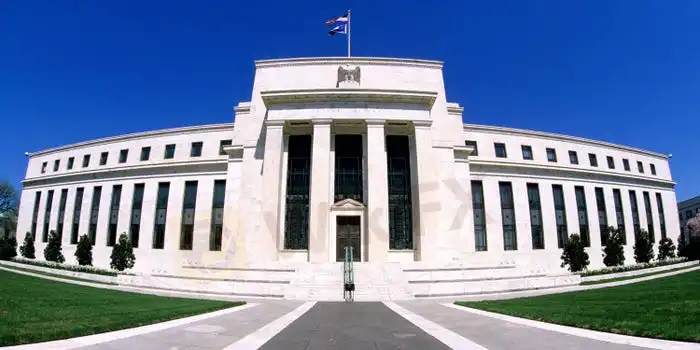简体中文
繁體中文
English
Pусский
日本語
ภาษาไทย
Tiếng Việt
Bahasa Indonesia
Español
हिन्दी
Filippiiniläinen
Français
Deutsch
Português
Türkçe
한국어
العربية
Is the Fed mistaken?
Abstract:Is the Fed mistaken?

The Federal Reserve (Fed) Chair Jerome Powell‘s doggedness about the ’transitory‘ inflation starts being a problem for an increasing number of investors, as, although investors love cheap liquidity and favourable market conditions, an increasing number of them think that the fast monetary expansion should no longer happen at any cost. Powell’s ignorance of the accelerating inflation is now bringing up the question of, is he making a policy mistake, and whether the US monetary policy and hence, the markets are safe in his hands.
Powell said at his testimony this week that ‘inflation will likely remain elevated in the coming months’ before easing. He added that expectations are ‘broadly consistent’ with the Fed target. Yet, inflation is skyrocketing, there is an extra $3.5 trillion fiscal spending bill waiting to get approved on the US government agenda - which will add an additional pressure on inflation, but the Fed‘s inflation rhetoric remains the same. As a results, the broader view on data and markets make Powell’s latest statement largely questionable. Is the Fed losing ground?
European and US indices were mostly offered yesterday. Dow Jones eked out slight gains, but Nasdaq slid 0.70% as the US monetary policy fears eclipsed the idea that rising Covid cases would re-fuel demand in most beloved tech stocks.
With thin summer volumes and mounting pessimism, we could see Nasdaq correct some 5 to 7% to the downside, toward the 50 and 100-day average levels respectively, but the medium-term outlook remains positive on the back of strong earnings growth and a more-than-favourable monetary conditions, despite rising prospects of an early policy tightening.
Activity in FTSE futures (+0.32%) hint at a positive start on Friday, as the recent pound depreciation should partly compensate losses in energy and commodity prices. Yet, the FTSE 100 may not hold the 7000p support before the weekly closing bell, if the overall risk sentiment remains dull due to rising Covid cases and prospects of softer economic recovery.
In commodities, the barrel of US crude is headed toward the $70 per barrel on news that Saudi Arabia and the United Arab Emirates reached an agreement to unlock more oil supply. There is no agreement on the UAE baseline production yet, but the latest news suggest that discussions are going in the right direction for the OPEC unity, and in the wrong direction for oil bulls. In this sense, even an almost 8-million-barrel decline in US oil inventories last week couldn‘t give a kick to the bulls. There is a clear toppish formation in crude oil price near the $75 per barrel. The $70 mark will likely be tested in the continuation of the actual downside correction, as the rising Covid cases also weigh on sentiment even though the recovery in traveling hasn’t taken a hit for the moment. On the contrary, Delta Airlines CEO said that leisure travel fully recovered to 2019 levels. But the Covid risks increase by the day, along with an eventual US-Iran nuclear deal that would boost Iranian oil, and the OPEC relaxing its restrictive measures. We see more factors that justify a further a slide below the $70 per barrel level, than a rally above the $75pb mark.

Disclaimer:
The views in this article only represent the author's personal views, and do not constitute investment advice on this platform. This platform does not guarantee the accuracy, completeness and timeliness of the information in the article, and will not be liable for any loss caused by the use of or reliance on the information in the article.
Read more

Fed Rocks The World
Fed Rocks The World

Could The Fed Now Be Making A Policy Mistake?
Could The Fed Now Be Making A Policy Mistake?

FED Officials: No Need to Worry About Inflation Now
San Francisco Fed president Mary Daly and Richmond Fed president Thomas Barkin stated that there is no need to worry about high inflation during the COVID-19 crisis.

The Fed May Hold Zero Interest Rate Until 2022
June 10th (EST), US Federal Reserve announced its decision to keep Federal Fund interest rate’s target range at 0%-0.25% unchanged, much in line with market expectation, and the current rate is estimated to remain until the end of 2022.
WikiFX Broker
Latest News
ASIC Sues Binance Australia Derivatives for Misclassifying Retail Clients
WikiFX Review: Is FxPro Reliable?
Malaysian-Thai Fraud Syndicate Dismantled, Millions in Losses Reported
Trading frauds topped the list of scams in India- Report Reveals
AIMS Broker Review
The Hidden Checklist: Five Unconventional Steps to Vet Your Broker
YAMARKETS' Jingle Bells Christmas Offer!
WikiFX Review: Something You Need to Know About Markets4you
Revolut Leads UK Neobanks in the Digital Banking Revolution
Fusion Markets: Safe Choice or Scam to Avoid?
Currency Calculator


